The Best Organic Pads (18+ Brands Ranked!)

Over the past 2 weeks we looked into 18 of the leading menstrual pads, reached out to the brands about the materials used in them, and rank them based on safety and sustainability.
Want to jump directly to our recommendations? Click here.
We took a deep dive into researching the world of menstrual pads—the materials used, why they’re important, and what brands you can rely on to offer a safe and eco-friendly product.
Many menstrual product brands are secretive about the material makeup of their products. While some disclose the materials used, we reached out to many of them for clarification.
Not all brands responded to our inquiries, and some just refused to disclose the information.
Let’s take a closer look at the world of sanitary pads.
If you’re interested in organic menstrual pads, it might not be obvious what their benefits are. Whether you’re concerned about your health, the environment, or both, there are some things you should know.
If health is your main concern: you will probably use over at least 10,000 pads or tampons during your lifetime, and they’re used in a very sensitive area. Therefore, it’s understandable why you might be concerned about the health impact your pads might be having.
If the eco impact of your pads is your concern: it’s true that they can be more eco-friendly, but if the environmental impact of your pads is your main concern, disposable pads are never going to be as good as reusable products. However, if you’d like to use disposable pads, there are a few reasons why organic disposable pads are more eco-friendly than their non-organic counterparts.
In recent years, brands have begun to offer more conscious period products. It’s important to be careful, because not all organic pads are created equal and some of them aren’t quite as organic or eco-friendly as you might think.
Quick Facts About Organic Pads
- Currently, OB-GYNs suggest that non-organic pads are just as safe as organic pads. However, that’s for you to decide; there hasn’t been a lot of research on the subject yet, and recent studies have shown some risk.
- Fully organic pads are often more eco-friendly than non-organic pads, but not as eco-friendly as reusable menstrual products.
- A truly organic pad is certified by GOTS, meaning the cotton used is grown and manufactured in a specific way that uses no pesticides and is whitened with peroxide and not chlorine.
- An organic pad thrown into the trash won’t biodegrade in any reasonable amount of time. If this is your concern, the only option is using those that you can compost yourself.
- Some women with irritation issues (chafing, external itching, or rashes) might find relief when switching to organic pads.
The Problems With Menstrual Products
There’s a plethora of chemicals and mystery ingredients used in the manufacture of tampons and pads and only recently has the world started to talk about it.
Things are starting to change, however. In late 2019, New York signed into law the Menstrual Products Right To Know Act which requires manufacturers to put ingredient labels on menstrual products.
Waste is another huge problem with menstrual products. Some figures state that in 2018, people in the US bought 5.8 billion tampons and a single woman will use somewhere between 5 to 15 thousands pads and tampons during her life.
That’s a lot of plastic waste that ends up directly in the landfill.
The Plastic Problem
The chemical makeup of traditional pads includes a high percentage of plastic—up to 90%. Not only are single-use plastics horrible for the environment, but all of that petroleum-derived plastic could be having health effects on you too.
Since all of that plastic ends up in a landfill, using organic pads can be more eco-friendly but only if you use compostable pads—but only if you compost them.
There are several different parts to a pad, and the material used in each is important:
- Top Sheet – The inner part that makes direct contact with the skin. Often made from plastic-based materials but organic pads will use natural materials.
- Core – The absorbent core of the pad. Sometimes made from petrochemical-derived foam, sometimes made of wood cellulose. Also bleached; it’s important that this is bleached with chlorine-free methods.
- Back Sheet – Moisture-proof back layer to keep fluid inside. Often made from polypropylene and polyethelene, petroleum-derived plastics but organic pads will use natural materials.
- Adhesives – Used to keep the layers of the pad together. Organic pads often use more eco-friendly and non-toxic glues.
- Fragrance – Unnecessary chemical fragrance that should be avoided but often used in traditional pads.
- Wrapper – Keeps the product individually wrapped. Often plastic or non-recyclable but organic pads often use recyclable packaging.
There are two problems with plastic being used: health impacts and environmental impacts. Let’s take a closer look at them.
The Potential Health Impacts of Non-Organic Pads
Only recently have we started to look at the potential hidden health impacts of disposable sanitary pads. This is an important issue because pads are placed directly against the genitals, there is a high level of direct contact with potentially harmful materials in a sensitive area.
Phthalates & VOCS – In 2019, a study of several brands of pads and diapers found high levels of phthalates in the products and concluded with a worrying statement. There’s the probability of a considerable amount of VOCs and phthalates being absorbed into the reproductive system when using traditional sanitary pads.
Fragrance – Read our story on fragrance for the full picture, but the rundown is this: fragrance can any of a list of thousands of chemicals, some of them being potentially harmful. Fragrance has no place in any feminine hygiene product, but brands like Always and Kotex use them frequently.
Pesticides – Conventionally-grown cotton is grown with heavy amounts of pesticides. These chemicals can stay on the cotton long after its been harvested, and can potentially end up in the pads.
How Organic Pads Remedy This Issue
Fully organic pads made without petrochemicals and fragrance are likely a much safer option for your health. Since fully organic pads don’t have any plastics or fragrance, the issues above shouldn’t be an issue.
If you suffer from vaginal irritation issues like chafing, external itching, or rashes, sometimes switching to organic products can help.
In general, the fewer materials or ingredients in a product, the lower the chances they can incite a reaction. It seems possible that women feeling irritation from traditional products might experience relief with organic ones.
Dr. Kudesia MD, reproductive endocrinologist and and clinical assistant professor of obstetrics and gynecology at Houston Methodist.
How Are Organic Pads More Eco-Friendly?
Let’s take a look at how organic pads are more eco-friendly.
In The Landfill
Let’s get one unfortunate fact out of the way to begin: natural pads don’t break down much faster in a landfill. Since landfills are, by design, devoid of oxygen—a critical ingredient for decomposition—they won’t break down in any reasonable amount of time. We’re talking hundreds of years.
However, some menstrual pads do claim to be compostable at home with the right methods and enough time. The brand Natracare says that their product breaks down in 18-24 months, which is a large commitment.
Materials Used
Pads that are 100% organic cotton are better for the environment in some ways. Truly organic cotton is grown without pesticides which leech into the water and disturb the ecosystem.
Furthermore, if the absorbent core of the pad uses totally chlorine-free pulp, that’s a big plus over traditional pads.
One byproduct of bleaching is the release of dioxins into the environment, which are a carcinogenic chemical. Because the bleaching process uses lots of water, it’s usually done near large bodies of water.
Elemental Chlorine Free (ECF) bleaching uses chlorine dioxide, not chlorine gas, and releases less dioxins, but Totally Chlorine Free (TCF) pulp removes chlorine from the bleaching process entirely, significantly reducing the amount of chlorinated chemicals that get into the water supply.
Packaging
While not strictly an attribute of organic pads, many organic pad brands strive to use recyclable packaging for their products.
This includes the box the pads come in, the individual wrappers, and even the shipping materials used if bought online.
Since many traditional pad brands use plastic not only in the product itself but the packaging, recyclable materials can make a big impact on reducing waste.
The Best Organic & Eco-Friendly Pads
We gathered 18 brands of pads that advertise themselves as being eco-friendly, non-toxic or otherwise better for us and the planet than traditional pads.
We looked closely at their material makeup, the possibility of recycling the box and packaging, and reached out directly to the manufacturers to find information that wasn’t publicly available.
Here are our findings.
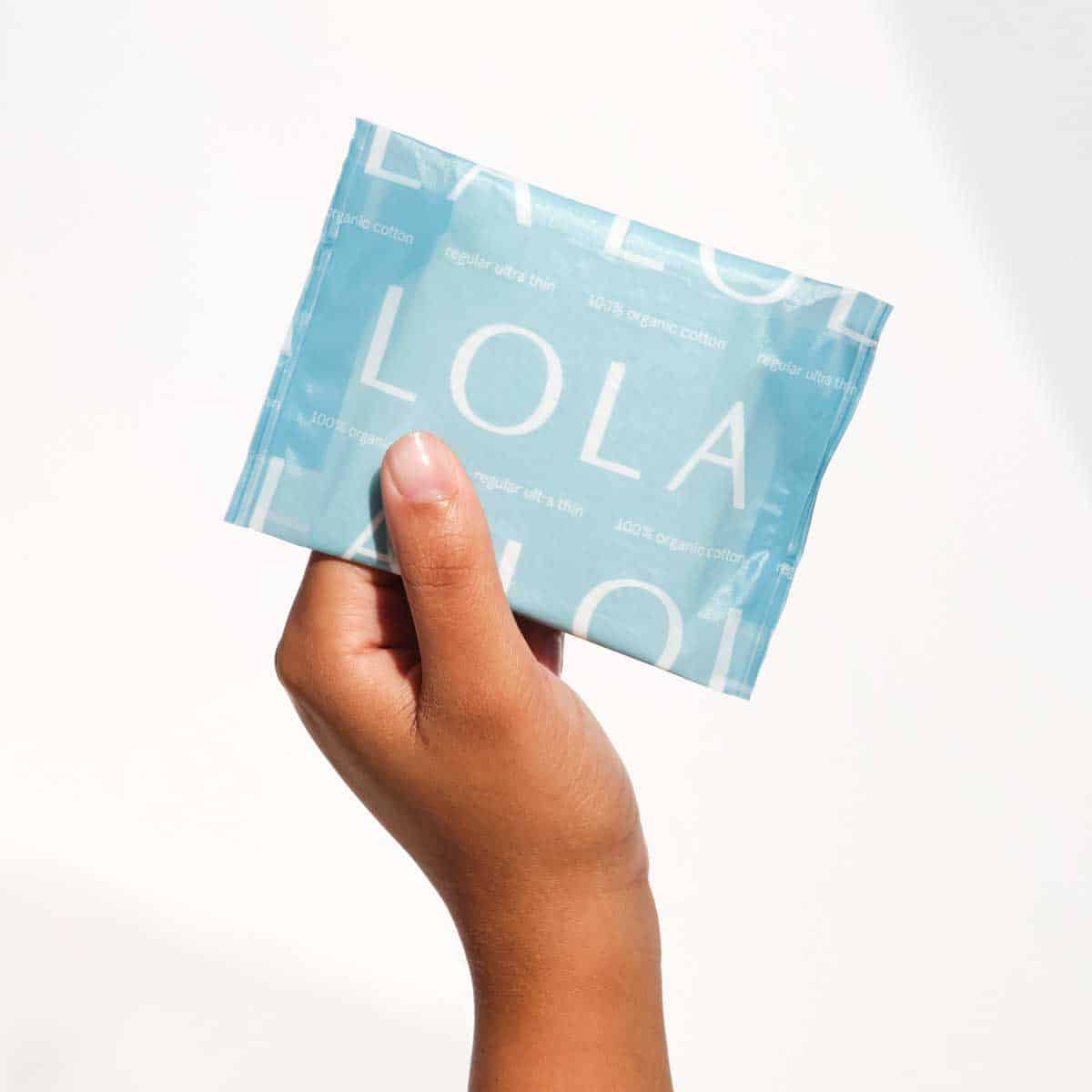
LOLA
- Top Sheet: 100% organic cotton
- Core: 100% organic cotton
- Back Sheet: Polyethylene (sugarcane-derived)
- Adhesive: Non-Toxic
- Recyclability: Wrapper & box recyclable
With a 100% organic cotton top sheet and core, along with a recyclable wrapper and box, LOLA’s pads check all the boxes for a good eco-friendly, organic cotton pad.
Shop It: Pads With Wings ($8)
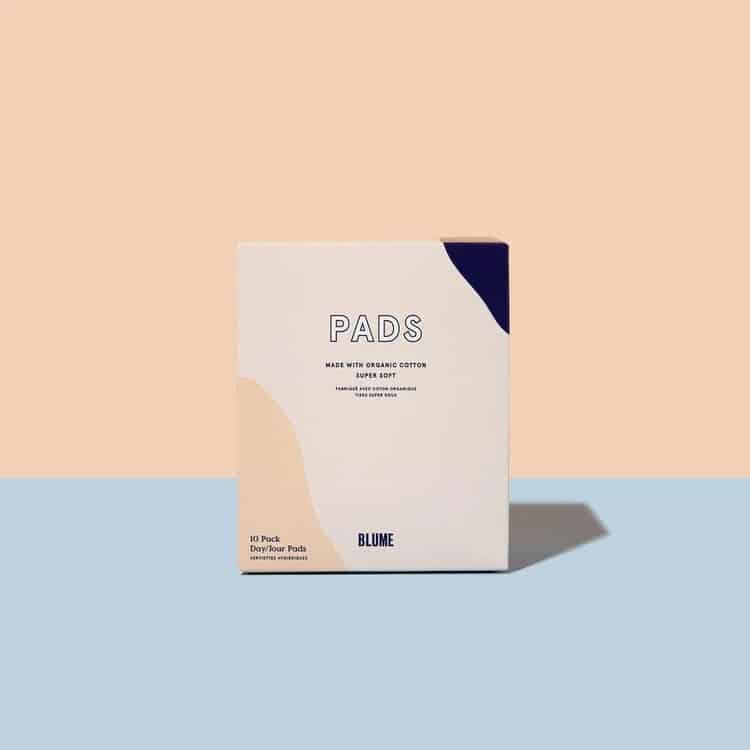
Blume
- Top Sheet: 100% organic cotton
- Core: 100% organic cotton
- Back Sheet: Mater-bi (cornstarch-derived)
- Adhesive: Non-Toxic (plant based materials)
- Recyclability: Box recyclable; wrapper & box biodegradable
Blume’s 100% organic cotton top sheet and core pads are another great choice. These come in a recyclable box and have a biodegradable wrapper.
Shop It: Organic Pads ($8)
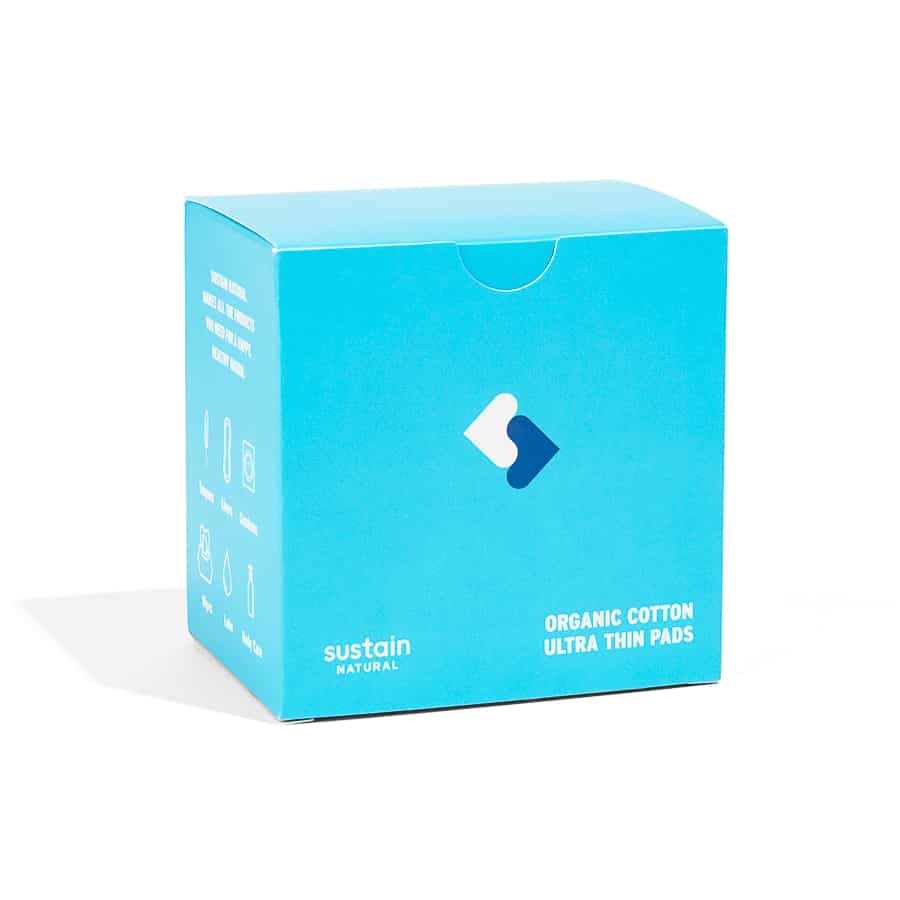
Sustain
- Top Sheet: 100% organic cotton
- Core: 100% organic cotton
- Back Sheet: Polymer
- Adhesive: Non-Toxic (styrene)
- Recyclability: Box recyclable
Sustain’s pads are made with a 100% organic cotton top sheet and back sheet. However, the wrapper is not recyclable. Still, a good choice for the health-conscious shopper.
Shop It: Ultra Thin Pads with Wings ($6.95)
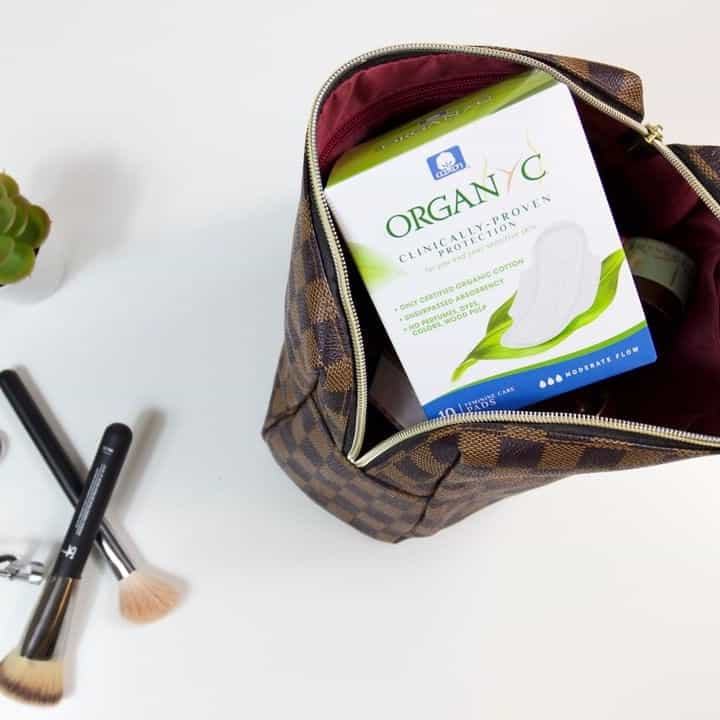
Organyc
- Top Sheet: 100% organic cotton
- Core: 100% organic cotton
- Back Sheet: Mater-bi (cornstarch-derived)
- Adhesive: Info not available
- Recyclability: Box recyclable
Organyc is an Italian brand offering 100% organic cotton pads, tampons and intimate care products. They’re a solid choice for those looking to have a more non-toxic period.
Shop It: Organ(y)c Pads with Organic Cotton Moderate Flow with Wings ($8.55 / 10 pcs) / Organ(y)c Pads with Organic Cotton Heavy Flow with Wings / Organ(y)c Pads Extra Overnight Flow with Wings ($17.11 / 20 pcs)
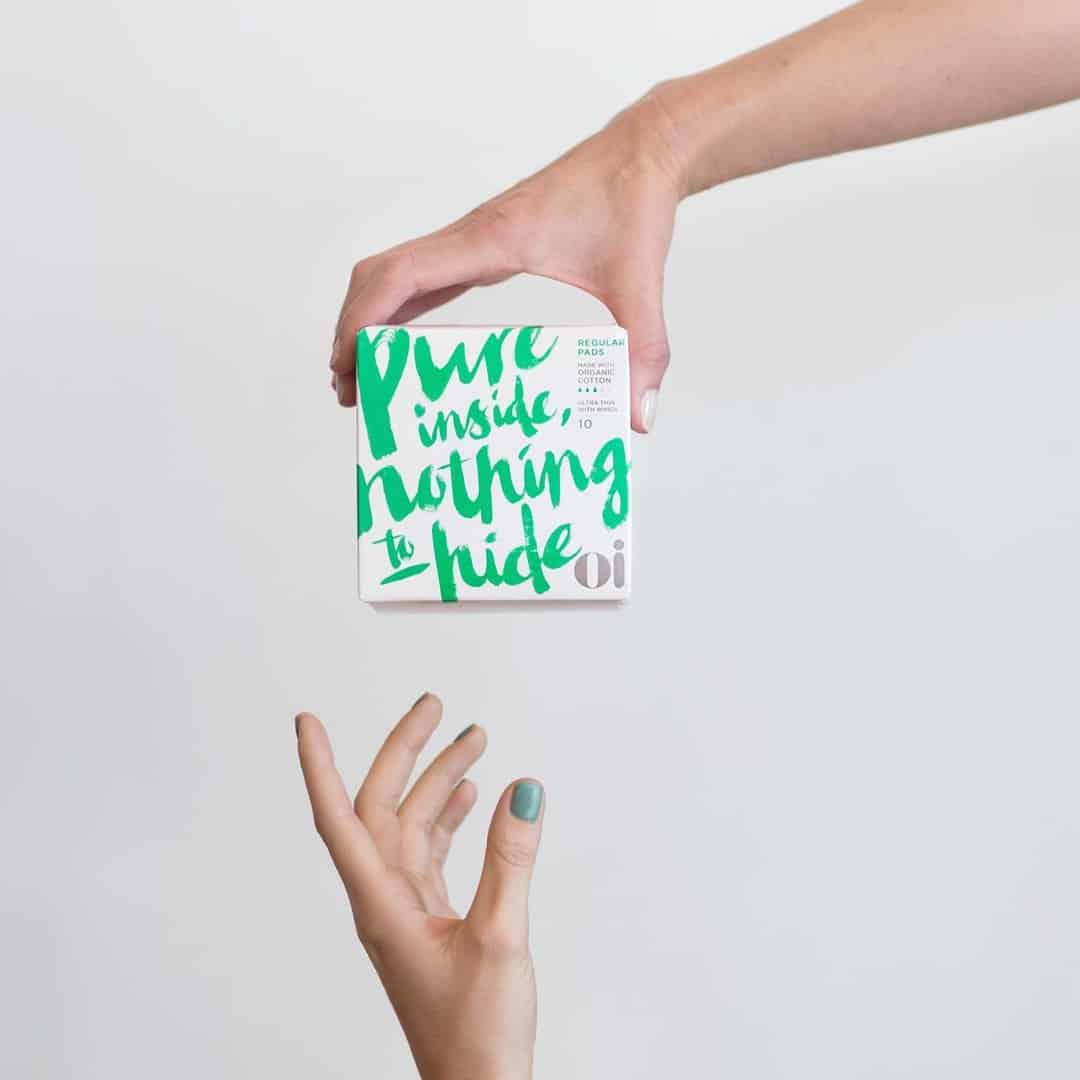
OI
- Top Sheet: 100% organic cotton
- Core: 100% organic cotton
- Back Sheet: Bi-polymer (cornstarch based)
- Adhesive: Non-Toxic (hot melt adhesive)
- Recyclability: Box recyclable; wrapper biodegradable
With 100% organic cotton pads, recyclable boxes and biodegradable wrappers, New Zealand-based OI (Organic Initiative) pads are a great choice for a non-toxic and eco-friendly period.
Shop It: Ultra Thin Pads with Wings, Regular ($4.10) / Ultra Thin Pads with Wings, Super ($4.10)
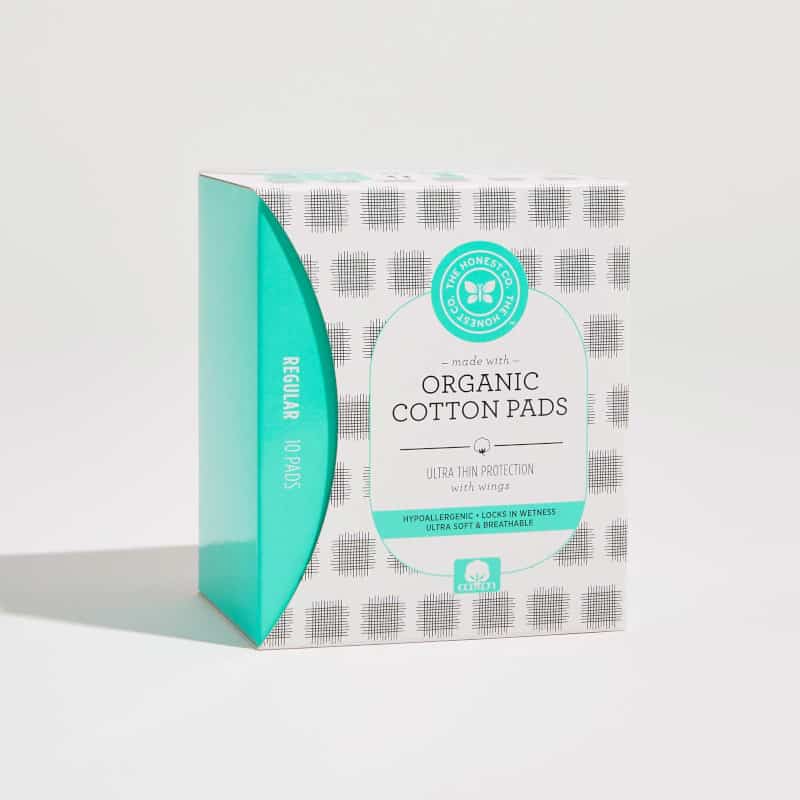
Honest Company
- Top Sheet: 100% organic cotton
- Core: 100% organic cotton
- Back Sheet: Polymer (plant based)
- Adhesive: Info not available
- Recyclability: Info not available
Hollywood actress Jessica Alba’s Honest Company offers 100% organic pads that can be a good choice. However, the brand didn’t respond to us when we asked about their adhesives and recyclability of the packaging.
Shop It: Organic Cotton Pads ($5.95)

Natracare
- Top Sheet: 100% organic cotton
- Core: FSC- and PEFC-certified sustainable wood pulp
- Back Sheet: Bioplastic (made from GM-free plant starch)
- Adhesive: Non-Toxic (medical grade synthetic rubber)
- Recyclability: Wrapper biodegradable
Natracare’s pads have a 100% organic cotton topsheet. However, the core of the pad isn’t organic. While this is an okay choice, we’d rather have a fully-organic pad.
Shop It: Regular Ultra Pads ($4.39) / Super Ultra Pads ($8.05) / Super Plus Ultra Pads ($7.79) / Long Ultra Pads ($7.79) / Normal Ultra Extra Pads ($7.24) / Super Ultra Extra Pads ($4.09) / Long Ultra Extra Pads ($4.90) / Regular Maxi Pads ($4.78) / Super Maxi Pads ($7.22) / Nighttime Maxi Pads ($6.79)
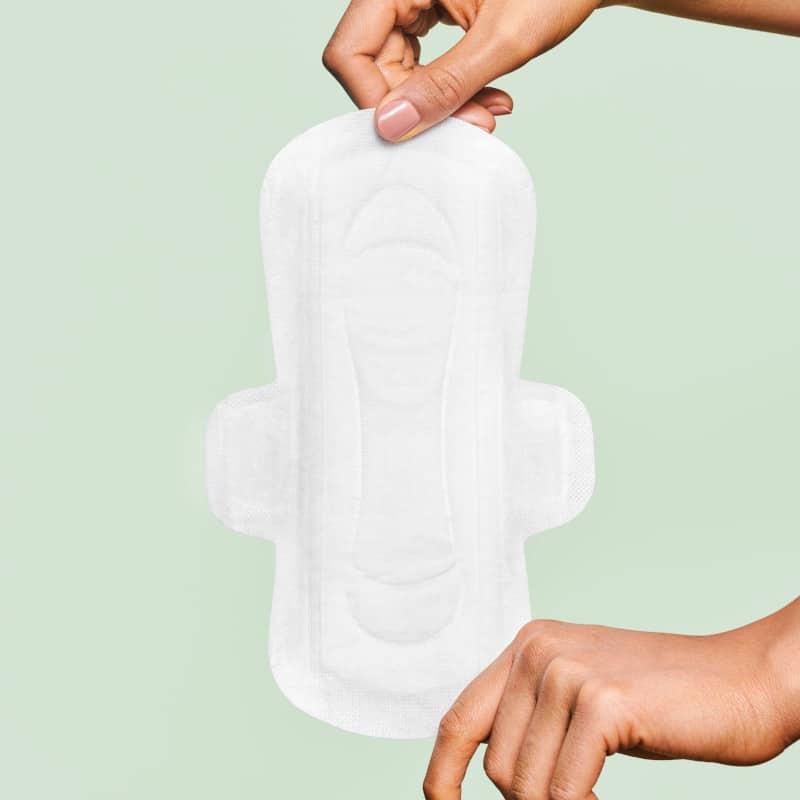
Rael
- Top Sheet: 100% organic cotton
- Core: Chlorine-free natural wood pulp, super absorbent polymers
- Back Sheet: Polyethylene, Polypropylene
- Adhesive: Non-Toxic
- Recyclability: Wrapper biodegradable but still wrapped in plastic
Rael is guilty of greenwashing. From the green packaging to the large, bold “ORGANIC” on the cover, it’s misleading. While the top sheet is 100% organic cotton, the core is just wood pulp and the back sheet is plastic. The wrapper of the pads is also made of disposable plastic.
Shop It: Organic Cotton Pads ($7) / Organic Cotton Reusable Pads 3 Pack ($34) / Organic Cotton Overnight Pads ($7)
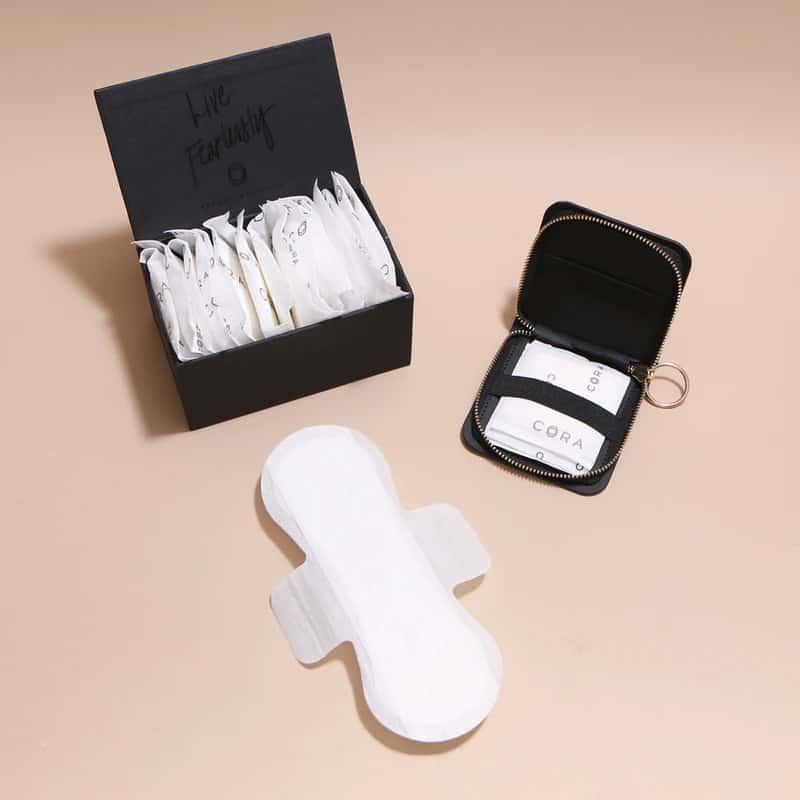
Cora
- Top Sheet: 100% organic cotton
- Core: Chlorine-free processed wood pulp, super absorbent polymers
- Back Sheet: Polypropylene
- Adhesive: Non-Toxic (hot melt adhesive)
- Recyclability: Wrapper non-recyclable
Like Rael, Cora markets their pads as “organic” when only the top sheet is made from organic cotton. The rest of the pad is much like Rael, with a non-organic wood pulp core and plastic back sheet.
Shop It: Organic Period Pads Regular ($13) / Organic Period Pads Overnight ($13)
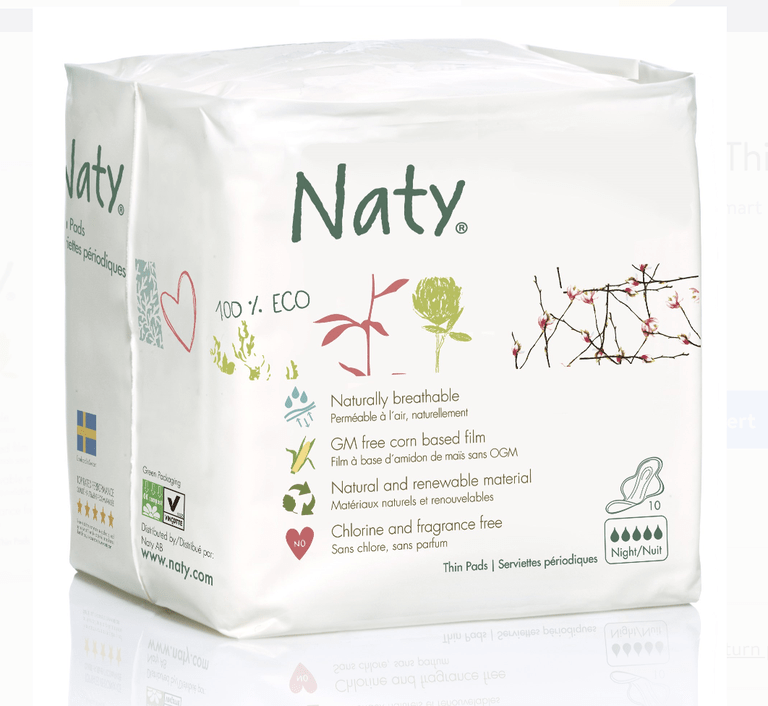
Eco by Naty
- Top Sheet: Chlorine-free pulp
- Core: Chlorine-free pulp
- Back Sheet: Natural cornstarch film
- Adhesive: Non-Toxic
- Recyclability: Wrapper & box recyclable
While these pads are made of 95% biodegradable materials, nothing in them is organic. The plus is that these have no plastic in them, which is a lot better than most traditional pads. However, if health is your main concern, a fully organic pad is a better choice.
Shop It: Thin Pads Normal ($9.24) / Thin Pads Super ($9.90) / Thin Pads Night

Always Pure Pads
- Top Sheet: 100% organic cotton; second top sheet composed of Polyethylene, Polypropylene, and Cellulose
- Core: wood cellulose, absorbent gel
- Back Sheet: Polypropylene, Polyethylene
- Adhesive: Non-Toxic
- Recyclability: Wrapper & box recyclable; box biodegradable
Yes, these are better than the regular Always pads, but when compared to better products on our list, these are sub-par. The top sheet is made of 100% organic cotton, but there’s a lot of plastic in the rest of the pad. As an alternative to regular Always pads, but for a better option, look elsewhere.
Shop It: Always Pure Ultra Thin Super Pads With Wings ($6.99) / Always Pure Ultra Thin Overnight Pads With Wings ($17.91 / 3 boxes) / Always Pure Ultra Thin Regular Pads With Wings
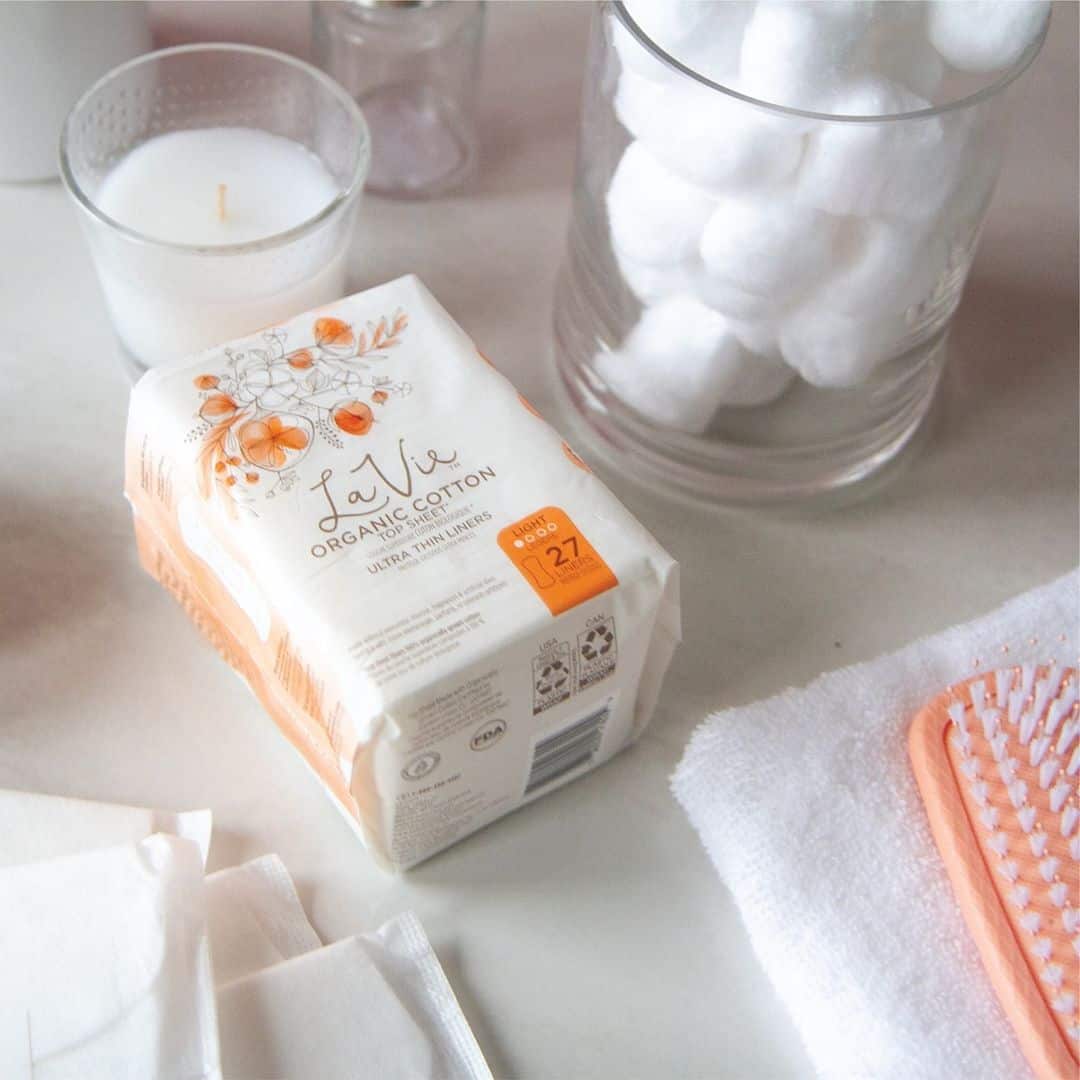
La Vie
- Top Sheet: 100% organic cotton
- Core: Info not available
- Back Sheet: Info not available
- Adhesive: Info not available
- Recyclability: Wrapper & box recyclable
These pads have a 100% organic cotton top sheet, but that’s all we can say for La Vie’s pads. They don’t list what the rest of the pad is made of, and we received no response from the brand when we reached out to them.
Shop It: Ultra Thin Regular Pads with Wings ($21.05) / Ultra Thin Liners ($18.59) / Long Pads with Wings ($20.39) / Overnight Pads with Wings ($21.05)
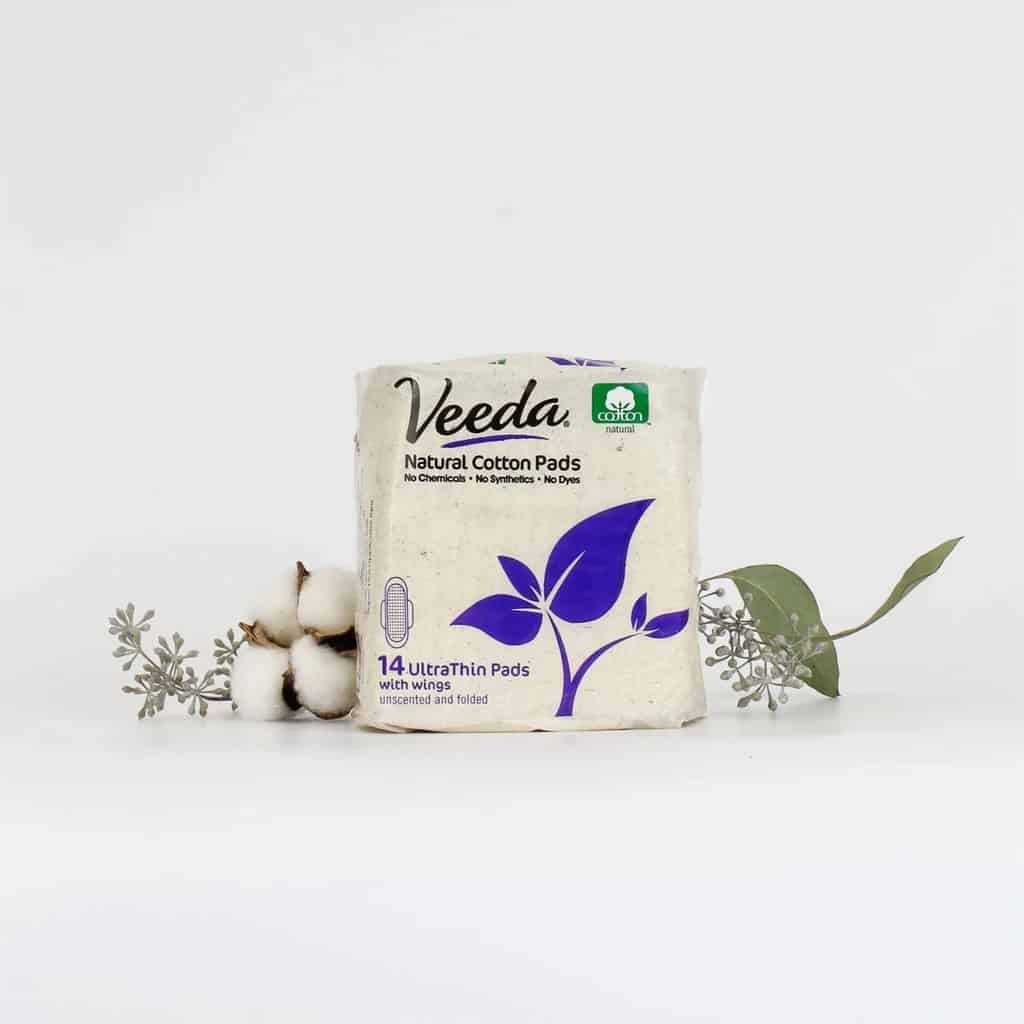
Veeda
- Top Sheet: 100% natural cotton
- Core: Super absorbent polymers
- Back Sheet: Info not available
- Adhesive: Non-Toxic
- Recyclability: Wrapper recyclable
No part of Veeda’s pads is eco-friendly or organic. We recommend other products on our list over these.
Shop It: Veeda Ultra Thin Super Absorbent Night Pads Natural Cotton Sanitary Napkins ($7.49) / Veeda Ultra Thin Super Absorbent Day Pads Natural Cotton Sanitary Napkins ($7.49)
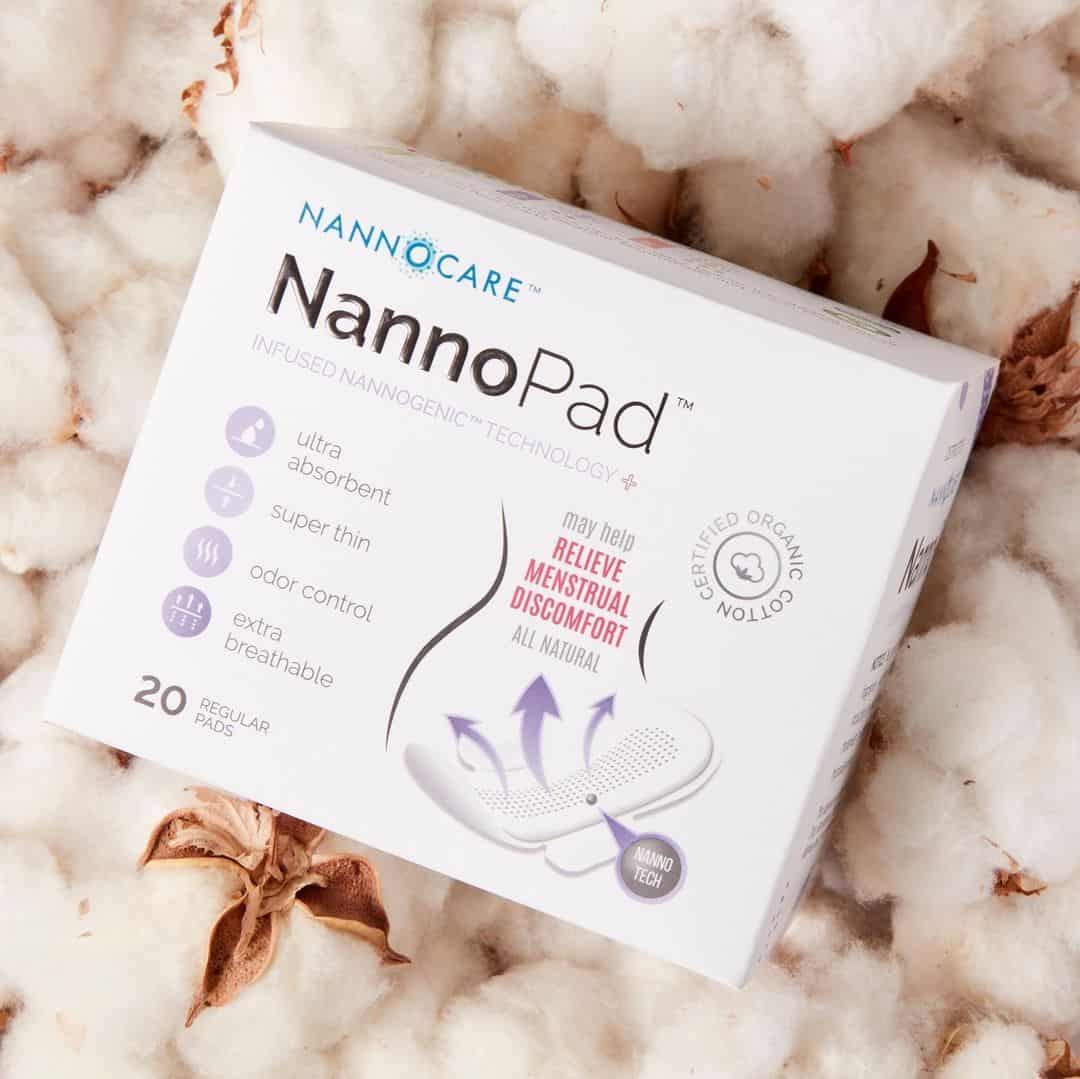
NannoPads
- Top Sheet: 100% natural cotton
- Core: High polymers
- Back Sheet: BPA-free plastic
- Adhesive: Non-Toxic (food safe)
- Recyclability: Box recyclable; wrapper & box biodegradable
NannoPads market their product as having “Nannogenic” technology which is a “proprietary blend of concentrated particles that emit far infrared energy.”
It sounds like nonsense to us. Nothing about these pads is recommended.
Shop It: NannoPad® Regular ($9.99) / NannoPad® Super ($11.99)
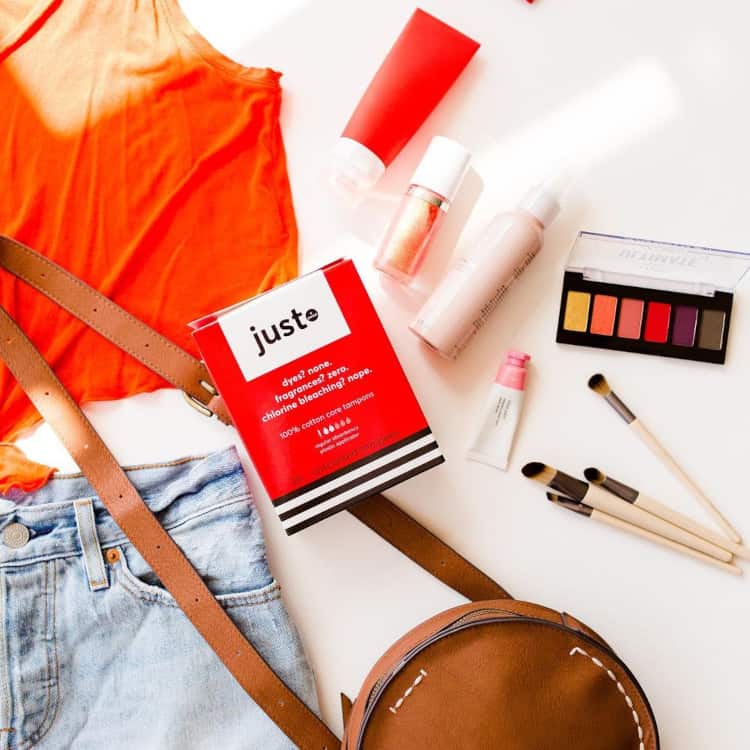
Just Pads
- Top Sheet: 100% cotton; second top sheet composed of Polyethylene, Polypropylene, and Cellulose
- Core: Absorbent wood cellulose, absorbent gel
- Back Sheet: Polypropylene, Polyethylene
- Adhesive: Non-Toxic
- Recyclability: Box recyclable
In terms of eco-friendliness and safety, there’s nothing special about Just’s pads. They’re essentially no different than the typical pads you might find in any big box store.
Shop It: Just Pads Regular ($5.47) / Just Pads Super ($5.47) / Just Pads Overnight ($5.47)

L. Pads
- Top Sheet: 100% organic cotton
- Core: Absorbent wood cellulose, absorbent gel
- Back Sheet: Polypropylene, Polyethylene
- Adhesive: Non-Toxic
- Recyclability: Wrapper & box recyclable
L. pads have a 100% organic cotton top sheet, and the wrapper and box are recyclable. Other than that, there’s not much else organic about them, and they contain plastic as well.
For every purchase made, the brand donates a period product to a person in need around the world.
Shop It: L. Chlorine Free Ultra Thin Pads with Wings, Regular ($6.99) / L. Chlorine Free Ultra Thin Pads with Wings, Super ($6.99) / L. Chlorine Free Ultra Thin Pads with Wings, Overnight ($6.99)
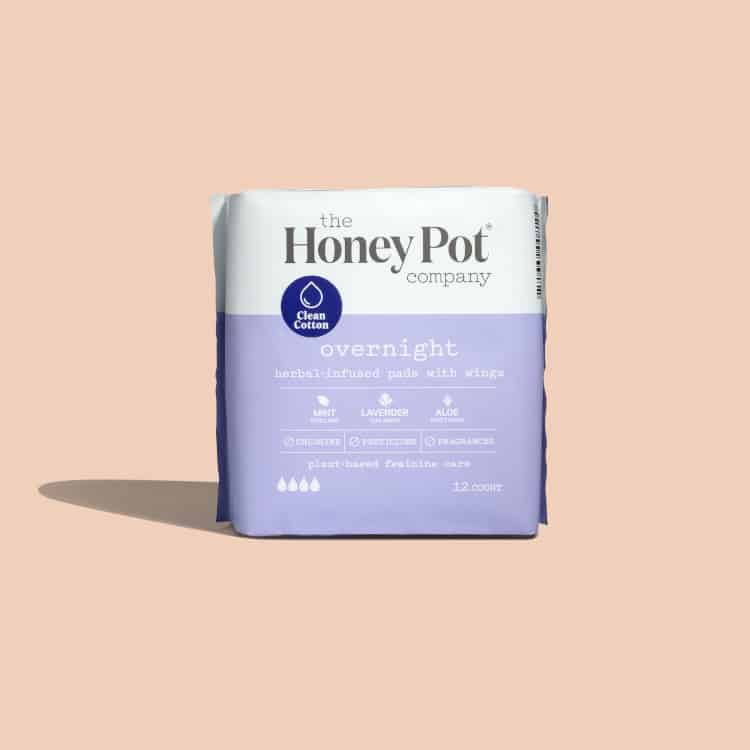
Honey Pot Company
- Top Sheet: Info not available
- Core: Info not available
- Back Sheet: Info not available
- Adhesive: Info not available
- Recyclability: Info not available
These pads have cute packaging, but they don’t disclose anything about the material makeup of the pads, and the brand never responded to us when we reached out to to them.
They’re also full of essential oils, which we believe should be nowhere near your vagina.
Shop It: Regular Herbal Pads with Wings ($7.99) / Overnight Herbal Pads with Wings ($7.99) / Super Herbal Pads with Wings ($7.99) / Post Partum Herbal Pads ($7.99)

Easy Day Pads
- Top Sheet: Info not available
- Core: Super absorbent polymers
- Back Sheet: Plastic
- Adhesive: Info not available
- Recyclability: Info not available
Easy Day doesn’t disclose what their pads are made out of. We contacted the brand, but would only discuss the makeup of the pads if we signed an NDA. These pads are most likely not made of any non-toxic or organic materials.
Shop It: Easy Day Regular Pads with Wings ($6.99) / Easy Day Heavy Flow Pads with Wings ($6.99)


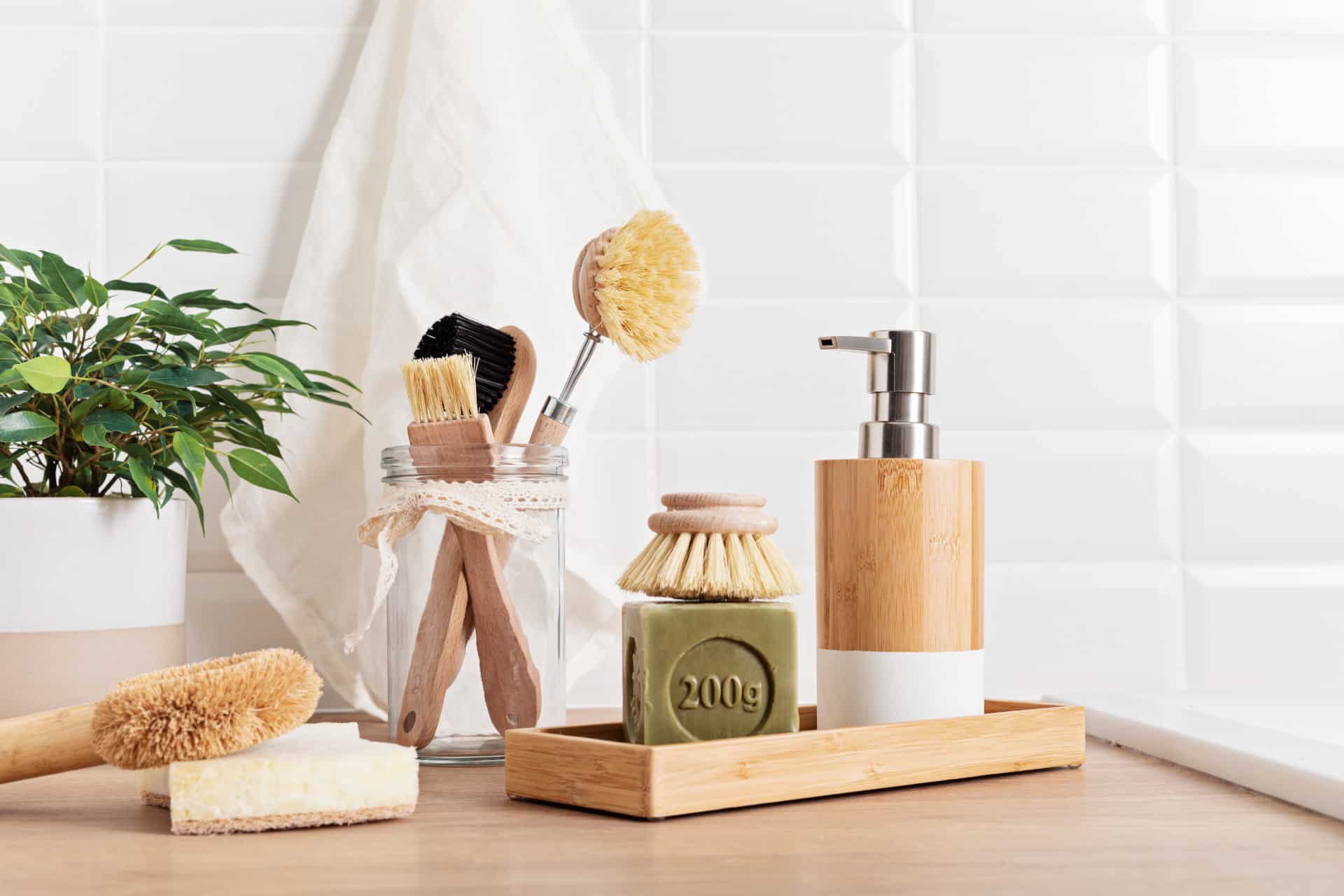

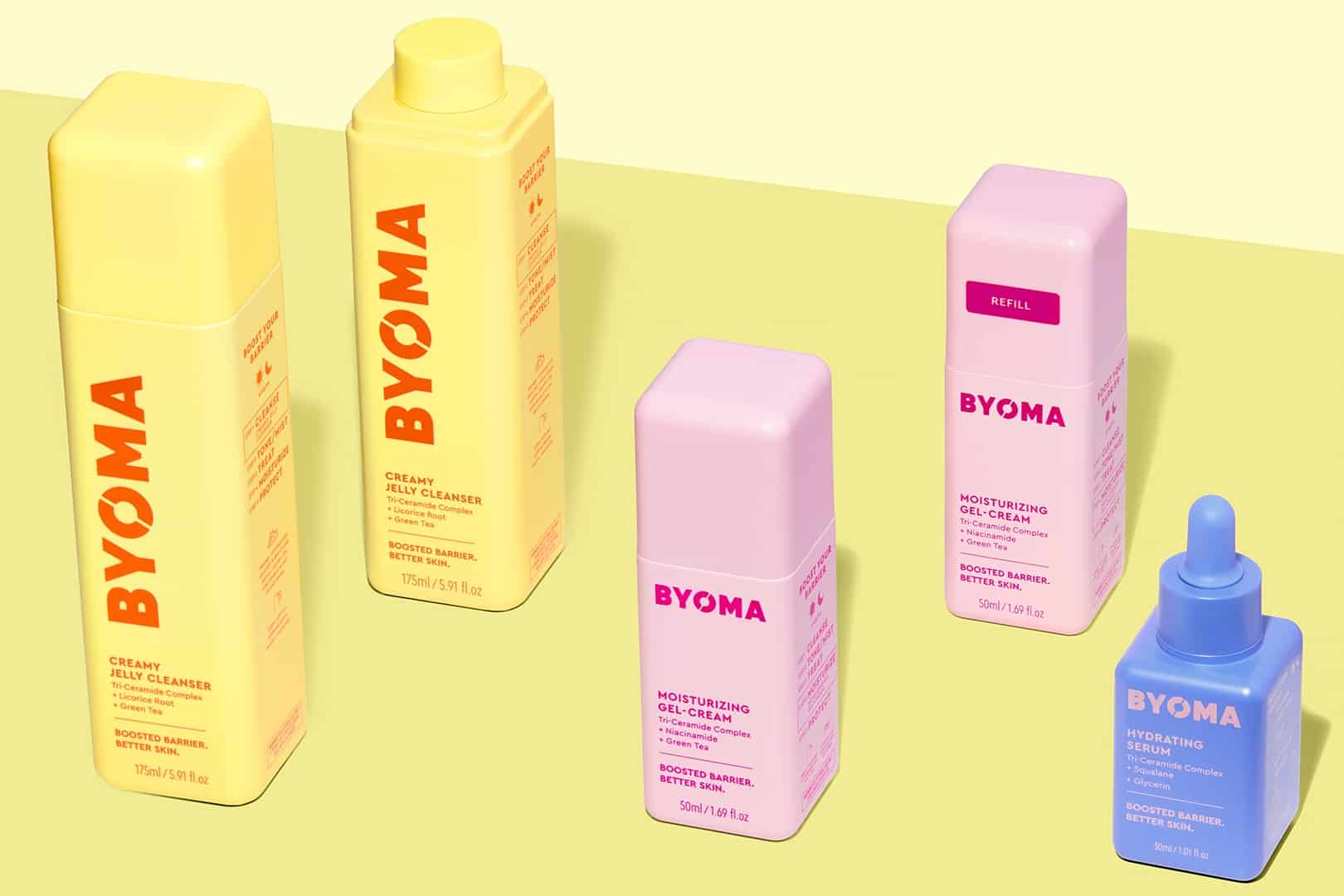
Angie
This list was extremely helpful and the most comprehensive. I have been fooled by many.. Honey Pot, Cora, La Vie an d Rael
I just want a long, thin daily liner that is 100% organic, everything is biodegradable and not individually wrapped
Thank you for the extensive analysis